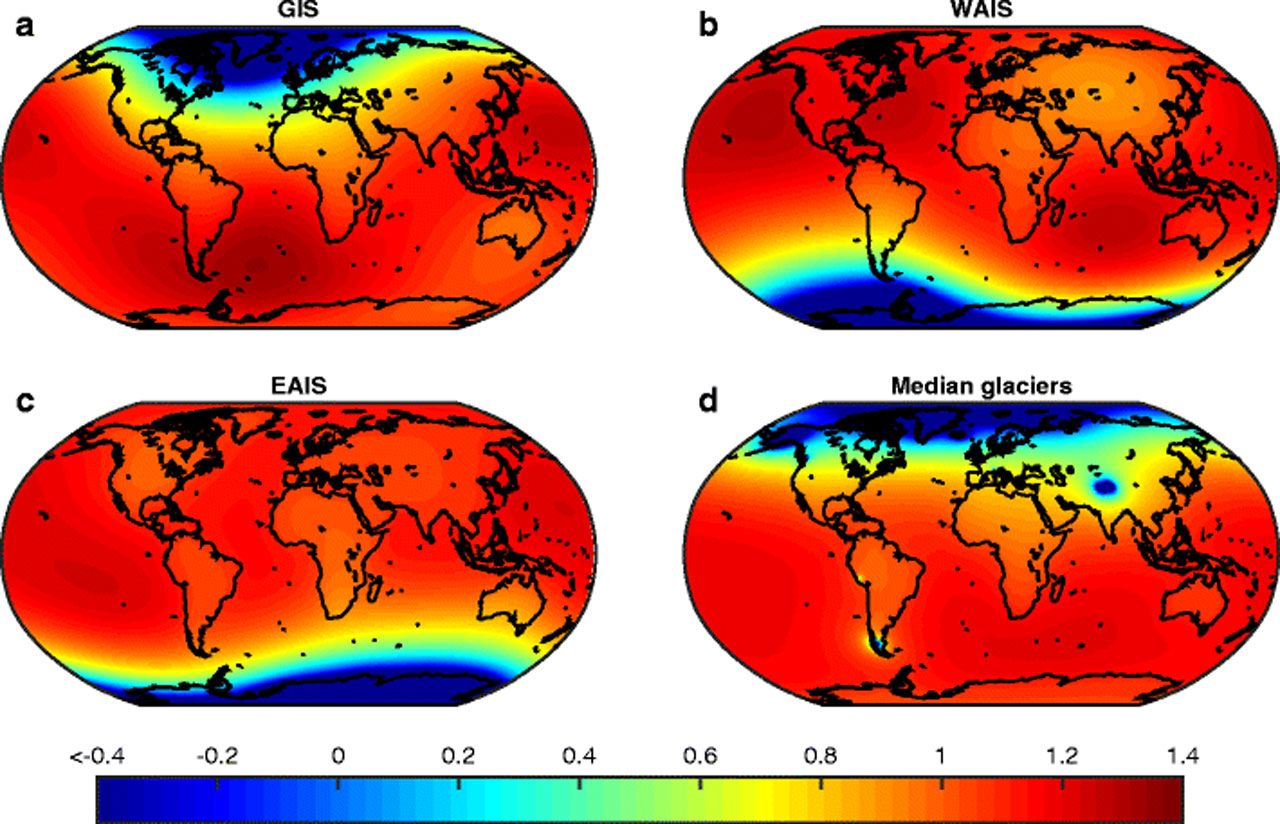
Sea level rise contributions from ice melt in different areas, including Greenland (a), West Antarctica (b), East Antarctica (c) and median of global glaciers (d). Values are ratios of regional sea level change to global mean sea level change. Adapted from Kopp et al. 2015.
axios.com - by Andrew Freedman - June 14, 2018
News of Antarctica's accelerating ice melt garnered worldwide headlines yesterday, as scientists revealed that 3 trillion tons of ice has been lost to the sea since 1992 — mostly from the thawing West Antarctic Ice Sheet and Antarctic Peninsula.
Why it matters: The location of the ice melt is important for determining the future of coastal communities, according to climate scientists. And, due to West Antarctica melting, it turns out that the U.S. coastline will be hit extra hard . . .
(CLICK HERE - READ COMPLETE ARTICLE)
Recent Comments